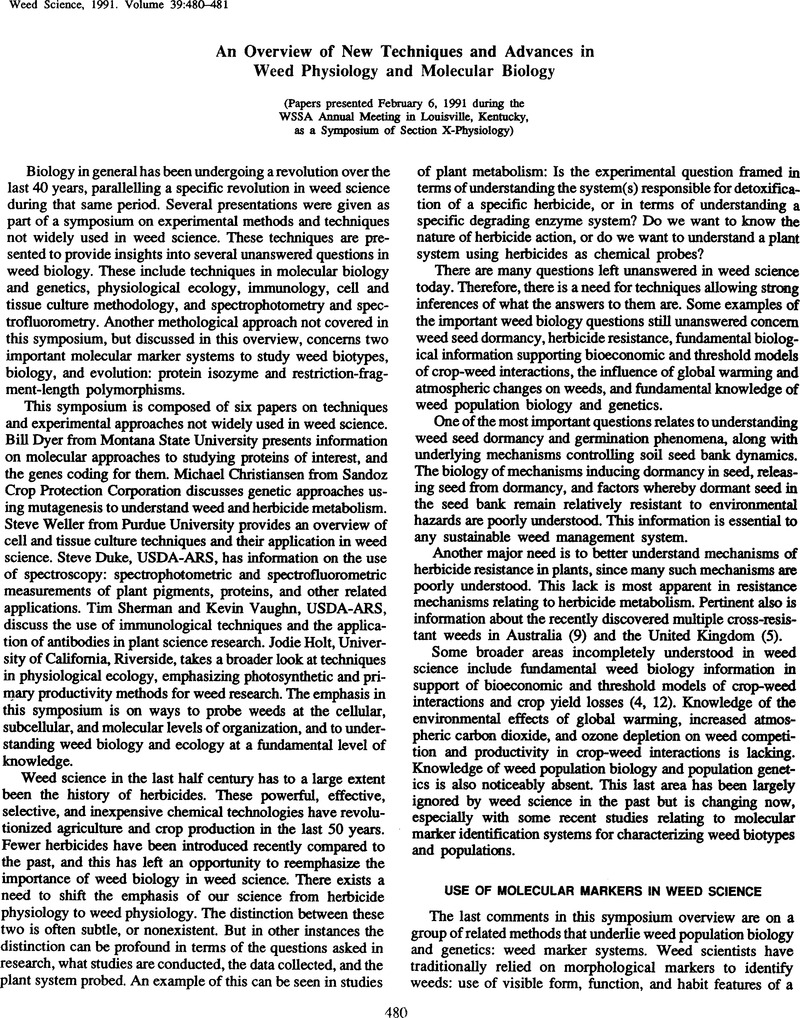Crossref Citations
This article has been cited by the following publications. This list is generated based on data provided by Crossref.
Wilen, Cheryl A.
Holt, Jodie S.
Ellstrand, Norman C.
and
Shaw, Ruth G.
1995.
Genotypic Diversity of Kikuyugrass (Pennisetum clandestinum) Populations in California.
Weed Science,
Vol. 43,
Issue. 2,
p.
209.
Dekker, Jack
1997.
Weed diversity and weed management.
Weed Science,
Vol. 45,
Issue. 3,
p.
357.
Ransom, Corey V.
Douches, David S.
and
Kells, James J.
1998.
Isozyme and RAPD variation among and within hemp dogbane (Apocynum cannabinum) populations.
Weed Science,
Vol. 46,
Issue. 4,
p.
408.





